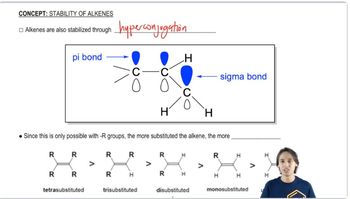Explain why each of the following alkenes is stable or unstable.
(h)
(i)
 Verified step by step guidance
Verified step by step guidance Verified video answer for a similar problem:
Verified video answer for a similar problem:



 4:28m
4:28mMaster Understanding trends of alkene stability. with a bite sized video explanation from Johnny
Start learning